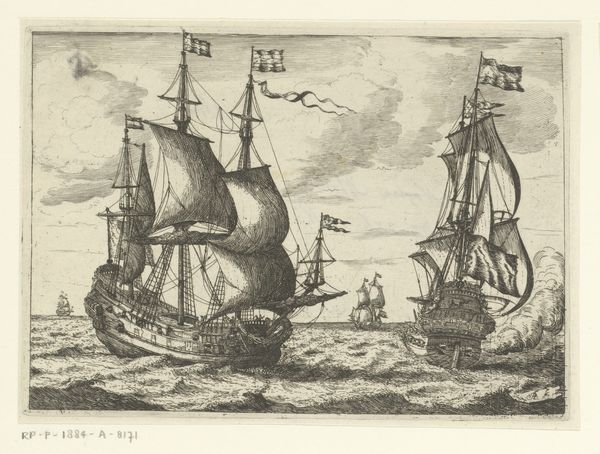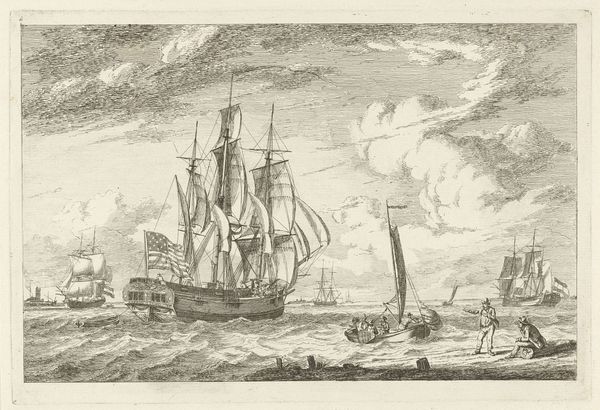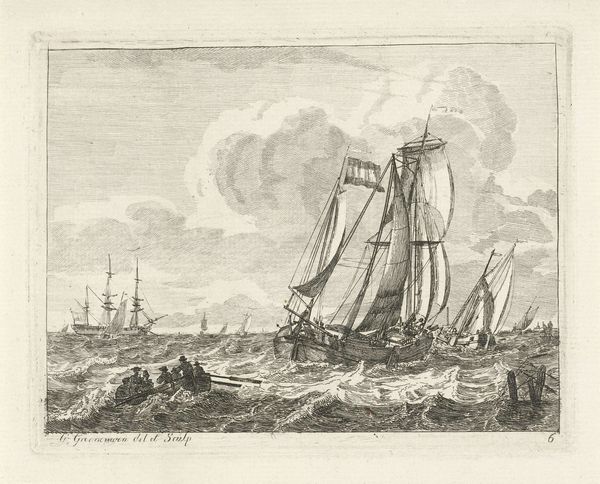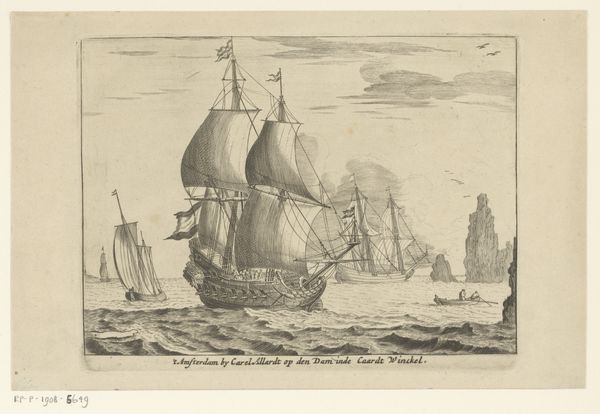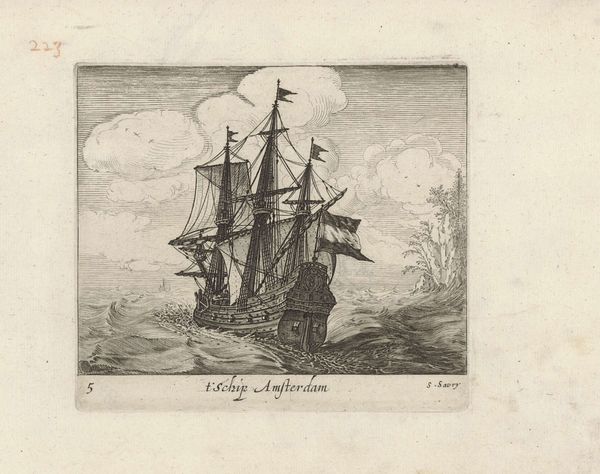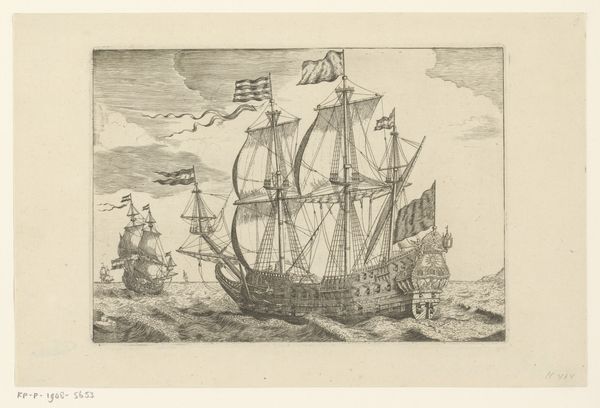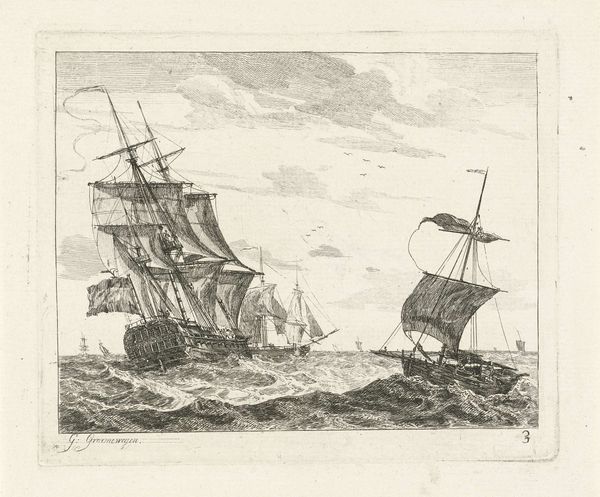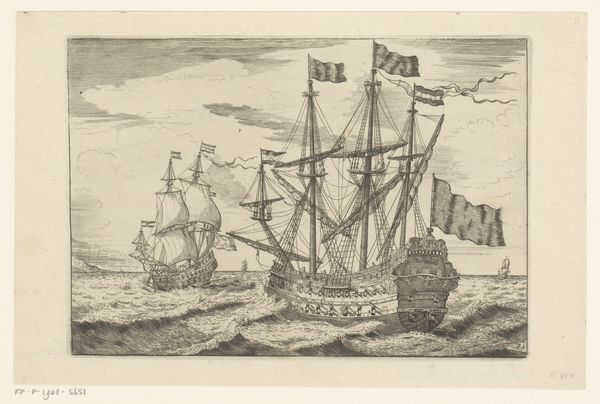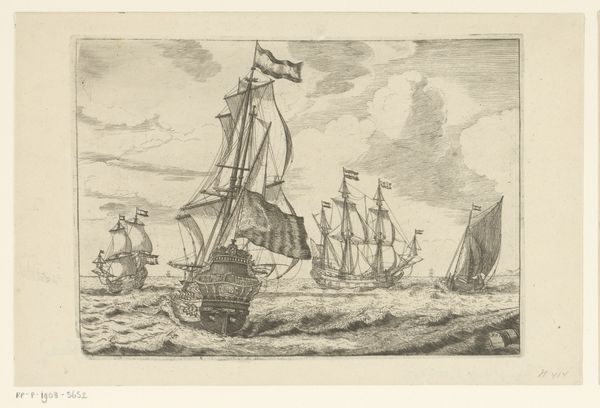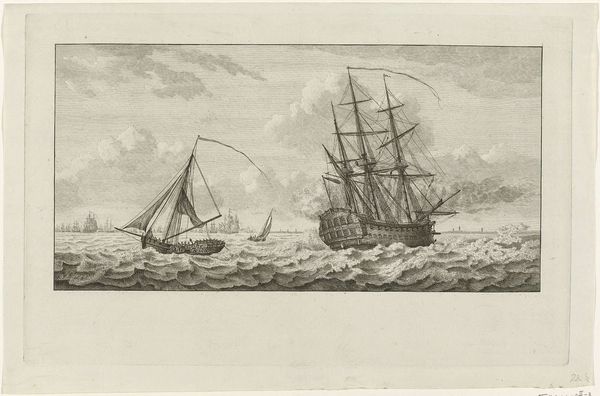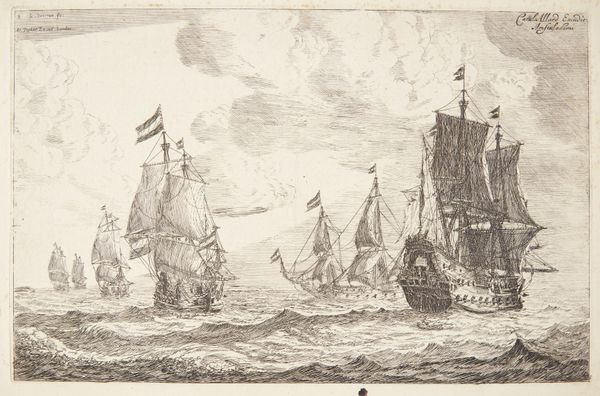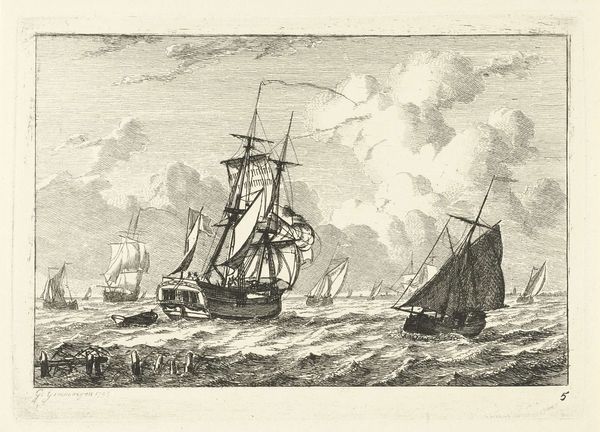
print, etching
#
dutch-golden-age
# print
#
etching
#
landscape
#
genre-painting
Dimensions: width 123 mm, height 159 mm
Copyright: Rijks Museum: Open Domain
Curator: This print, "Zeilende driemaster met links een rotskust met bomen," offers us a glimpse into the Dutch Golden Age. It is attributed to Salomon Savery, created sometime between 1610 and 1665, and can be found here at the Rijksmuseum. Editor: It’s remarkable, isn’t it? Look at the sheer amount of detail achieved solely through etching. I am drawn to the almost feverish intensity in the waves – they dominate the scene! Curator: That energy speaks volumes, doesn’t it? The sea wasn't just a backdrop, it represented opportunity and danger, both of which deeply affected the Dutch psyche during this period. These ships symbolized more than just transportation; they were embodiments of national ambition and economic power, bringing exotic goods and establishing trade routes across vast oceans. Editor: I'm curious about the labor that went into creating and circulating prints like these. Consider the copper plates themselves, the etching tools, the press – all evidence of skilled craft and industrial output. They would have been made in multiples to meet the burgeoning demand for imagery… affordable, portable. These objects were designed for circulation and consumption within a burgeoning commercial society. Curator: Exactly. The artist skillfully used symbols associated with Dutch maritime prowess and intertwined it with landscape, another popular genre at the time, to create a lasting impression on viewers. The rocky coast and other ships may symbolize the challenges that one must face to establish trade routes or build colonies abroad. The wind, the open seas – it all speaks to journeys. Editor: It is interesting how the romantic portrayal masks the immense exploitation occurring at that time as goods flowed to Europe. Did these printed images help manufacture support and obscure a more complex truth of how these trades were done? Curator: That's a crucial perspective. And maybe the answer lies within the collective memory that visual symbols like this encode: one that reflects not just ambition, but also perhaps a subtle, lurking unease. Editor: Food for thought indeed! Thank you, I’ll think of this print differently next time. Curator: As will I! What a remarkable piece for understanding cultural identity during that age!
Comments
No comments
Be the first to comment and join the conversation on the ultimate creative platform.
